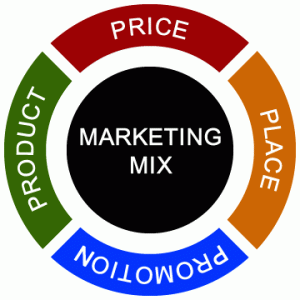The Marketing Strategy Dilemma for Professional Services: ABM vs. Inbound Marketing
By Jaco Grobbelaar on Tue, Nov 25, 2025 @ 04:57 AM

Why Marketing Strategy Matters for Professional Services
Choosing the right marketing strategy can feel like navigating a maze, especially for professional services firms or teams with limited marketing resources. Should you focus on inbound marketing, drawing leads in through content and SEO? Or is account-based marketing (ABM), which focuses directly on targeting high-value clients, the smarter approach?
The truth is, there’s no single solution. Each strategy has its benefits and trade-offs, and the best choice really comes down to who your clients are and what your firm wants to achieve. By the end of this post, you’ll have a clear understanding of ABM vs inbound marketing, including the strengths, limitations, and ideal scenarios for each approach. Before deciding which strategy is right for your firm, it’s important to go back to the basics. Knowing how each method works and the types of results they can deliver will make it easier to choose the approach that truly aligns with your goals and resources.
Understanding the Two Approaches
Before you pick a strategy, it helps to clarify the fundamentals. Understanding how each method works and what kind of results to expect makes it easier to choose the approach that actually fits your firm.
What is Inbound Marketing?
Inbound marketing is all about attracting potential clients to your firm through valuable content and resources. This includes blogs, social media, SEO, newsletters, and other channels that draw prospects in rather than reaching out to them directly.
For professional services firms, inbound marketing can help:
- Build credibility and thought leadership in your field.
- Educate prospective clients on your expertise.
- Generate a steady flow of leads without aggressive outreach.
While inbound is often lower-cost and scalable, it typically requires consistent effort and time to see meaningful results.
What is Account-Based Marketing (ABM)?
Account-based marketing flips the traditional approach: instead of casting a wide net, you target specific high-value clients or accounts with personalized campaigns. ABM combines marketing and sales efforts to engage the exact organizations that matter most.
For professional services firms, ABM can help:
- Focus resources on clients that align with your ideal profile.
- Create highly personalized messaging that resonates.
- Shorten the sales cycle by targeting decision-makers directly.
However, ABM usually requires more coordination, a clear ideal client profile, and careful planning, which can be challenging for firms with limited marketing capacity.

Comparing ABM vs Inbound Marketing for Professional Firms
Lead Generation vs. Targeted Relationships
Inbound marketing is typically volume-driven, aiming to attract as many potential clients as possible through content and organic reach. It works well when your firm wants to cast a wide net and build awareness over time. Think of inbound marketing like casting a wide net in the ocean: you attract lots of fish, some of which are exactly what you want, and some you’ll filter out later.
ABM, on the other hand, is like spearfishing: you go after specific, high-value targets with precision. This approach is ideal for firms looking to land a few strategic clients rather than chasing a large number of general leads.
Think of inbound marketing like casting a wide net in the ocean: you attract lots of fish, some of which are exactly what you want, and some you’ll filter out later. ABM, on the other hand, is like spearfishing: you go after specific, high-value targets with precision.
For example: In marketing for law firms, a team might use inbound marketing to attract inquiries from general business owners, while ABM could focus on directly engaging CFOs at mid-size companies for high-value legal retainers.
Resource Requirements
Inbound marketing generally requires consistent content creation and some ongoing management, but it can be scaled gradually, even by a small team or an external agency.
ABM requires more coordination between marketing and sales, plus time to research and personalize campaigns for each target client. While it can deliver high ROI, it’s often more labor-intensive upfront, which is an important consideration for firms with lean marketing resources.
ROI and Time to Impact
Inbound marketing often has a longer lead time, with results building over months as content gains traction and search visibility grows.
ABM can deliver faster, more predictable results, especially when targeting accounts that already match your ideal client profile. However, because it’s highly personalized, it may not scale as easily without additional resources.
Choosing the Right Approach
There’s no one ‘better’ marketing strategy; it’s about picking the one that fits your goals, your team, and the clients you want to reach. For many professional services firms, the decision comes down to three key factors:
Firm Size and Resources
Small firms or those with limited marketing personnel may find inbound marketing easier to implement, as it can be managed gradually with fewer resources. ABM, while potentially more rewarding, requires dedicated time for research, personalization, and sales coordination. This makes it more feasible for firms with slightly larger teams or access to external support.
Target Client Profile
If your firm’s ideal clients are high-value or niche accounts, ABM can help you focus efforts on the prospects that matter most. Conversely, if your target audience is broader, inbound marketing can help generate a consistent flow of potential leads while building credibility and visibility.
Growth Goals and Timeline
Consider your short-term and long-term goals. Inbound marketing typically takes longer to show results, but it builds a foundation for sustainable growth. ABM can deliver faster, high-quality wins, but may not scale as easily over time without ongoing investment. For many firms, a hybrid approach (using inbound to generate awareness and ABM to target top accounts) offers the best of both worlds.
Next Steps
Choosing the right marketing strategy doesn’t have to be overwhelming. Start by assessing your firm’s goals, resources, and target clients, and then consider how ABM vs inbound marketing, or a hybrid approach, could help you achieve them.
- Audit your current efforts: Identify what’s already working and where there are gaps in attracting or engaging clients.
- Define your ideal clients: Clarifying your target accounts or audience segments makes both inbound and ABM more effective.
- Take it one step at a time: Maybe start with a single ABM pilot or a few inbound pieces. See what works, tweak it, and build from there.
- Partner with marketing specialists: If your firm doesn’t have in-house marketing expertise, working with professionals who know ABM vs inbound marketing strategies for professional services can save time, reduce trial-and-error, and help you generate clients more effectively.
Effective professional service marketing requires choosing the right strategy for your firm, whether you focus on inbound, ABM, or a hybrid approach.
Ready to take the next step? Book a consultation with our team today to identify the marketing strategy that will attract the clients you want and drive real growth for your firm.
You May Also Like
These Related Stories

13 Steps To Inbound Marketing: A Sample Marketing Plan [Checklist]

A Sample Marketing Plan for Inbound Marketers [Infographic]

.png?width=302&height=75&name=BVM%20Logo%20-%20transparent%20(1).png)

No Comments Yet
Let us know what you think